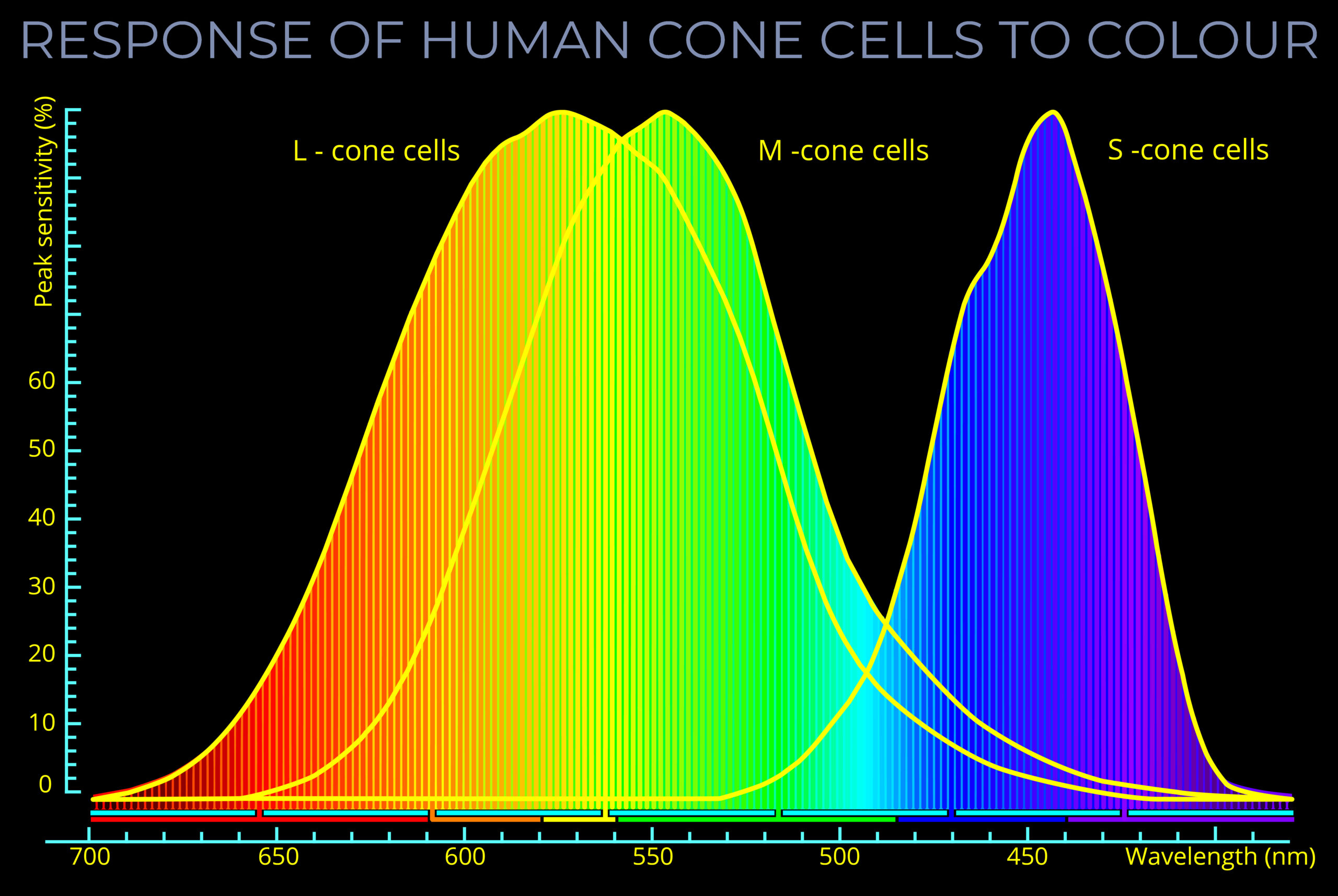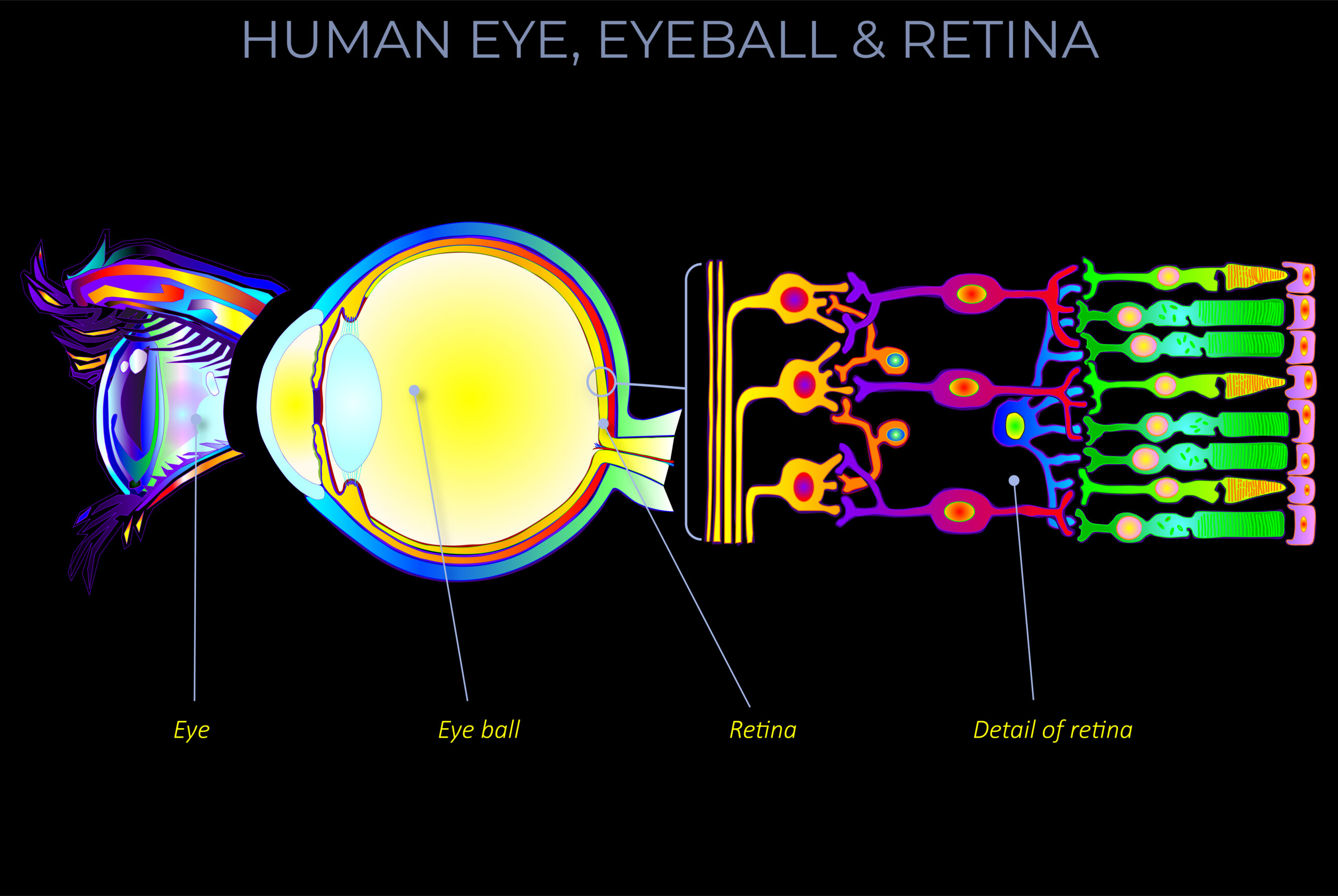The spectral power distribution (SPD) of light or a coloured stimulus refers to the range, combination, and intensity of light wavelengths it emits. Precise measurement of these wavelengths, frequencies, and intensities reveals the SPD of a light source or reflected light from a surface.
- Spectral power distribution is usually measured with a spectroscope.
- The human eye cannot directly perceive SPD:
- The human eye has three types of colour receptors, also known as cones.
- These cones respond differently to various wavelengths of light, which allows us to perceive a wide range of colours.
- Tristimulus values can be used to represent the response of these cones to different wavelengths of light.
- By measuring tristimulus values, we can accurately describe the perceived colour of an object.
- While tristimulus values are commonly used to quantify colour perception, they do not provide a complete characterization of the spectral power distribution of light.
- Different stimuli can produce the same colour sensation for an observer. Visually indistinguishable colour stimuli that appear the same but have different spectral compositions are often described as being metameric.
- Metamerism occurs because each type of cone responds to the distribution of energy across the entire spectral power distribution of a light source, and not just to the intensity of individual wavelengths.
- The spectral power distribution (SPD) of light or a coloured stimulus refers to the range, combination, and intensity of light wavelengths it emits. Precise measurement of these wavelengths, frequencies, and intensities reveals the SPD of a light source or reflected light from a surface.
- Spectral power distribution is usually measured with a spectroscope.
- The human eye cannot directly perceive SPD:
- The human eye has three types of colour receptors, also known as cones.
- These cones respond differently to various wavelengths of light, which allows us to perceive a wide range of colours.
- Tristimulus values can be used to represent the response of these cones to different wavelengths of light.
- By measuring tristimulus values, we can accurately describe the perceived colour of an object.
- While tristimulus values are commonly used to quantify colour perception, they do not provide a complete characterization of the spectral power distribution of light.


